Mystery shopping experiment on social media: Is there anybody out there?
What happens when a prospective international student uses Facebook and Twitter to indicate their interest in finding out more about your institution?
At Intead, we recently conducted a mystery shopper experiment with institutions in the US, Canada, Australia, and New Zealand to see how they responded to the Facebook and Twitter inquiry of a prospective international student created by us for the purposes of the study.

Establishing a social media platform is not enough
In a short span of time it seems as if every institution under the sun has created a Facebook or Twitter account, and for good reason. Given the proliferation of social media and students’ affinity for it, having a vibrant presence on social media is critical. But as we have often written about and spoken about at conferences, creating a social media account is not enough in itself. In fact, it is worse to have an unmonitored, ineffective, ignored account than it is to have no account at all. We wanted to know how well institutions are leveraging their social media presences to respond quickly and courteously to students reaching out via Facebook and Twittter. To find out, our intern, Vanessa Zhu, conjured up the identity of prospective international student “Aahana Bahl”, aged 22, from India. “Ms Bahl" sent Facebook messages and tweets from October 24 through November 15, 2014, to 80 randomly selected institutions – 50 in the US, 15 in Canada, 10 in Australia, and 5 in New Zealand – indicating her interest in the institution and her desire to receive more information. The Facebook message and the tweet were simple and straightforward:
- Facebook: “I'm so excited to study abroad! Please direct me to more information about your international student opportunities.”
- Twitter: “Please tell me more about your international student opportunities. I am eager to learn more! Thanks!”
All institutions were sent a Facebook message and a tweet. The date and time the message was sent was recorded and then the response was closely monitored.
Some institutions simply did not respond
More than a quarter (29%) of all institutions surveyed did not respond to inquiries placed on either platform. That means 29% of the 80 institutions surveyed - 23 institutions - missed an opportunity to engage with an interested prospective student.
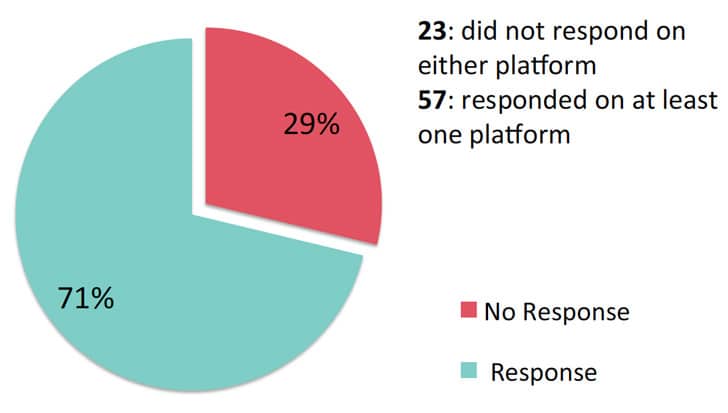
So much is at stake
When prospective students research institutions, they research multiple institutions, often in multiple countries. “Aahana Bahl” tried to connect with 80 universities as she researched her international study options. As is the case with many international students, she did not limit her research to institutions in North America. International students have options throughout the world to spend their time (and money) studying. North American institutions need to remember that they are not just competing with each other but with universities in Australia, New Zealand, China, Malaysia, etc. When other countries show that they are more responsive than their North American counterparts, those North American institutions are losing ground. As has been widely researched and reported, the way that students communicate has changed significantly. This mobile generation wants information via their preferred method on their terms. Students do not even want to take the time to read or send emails anymore; texting and social media are the preferred methods of communication. Messages on these platforms are short, sweet, and to the point – exactly the way students communicate with their peers. This is especially true for international students, as communication barriers are lowered significantly with text and social media messaging. Higher education marketing has been slow in responding to students’ desires and preferences. Institutions need to move beyond merely creating social media accounts and use them to their greatest advantage, including:
- A system of creative content generation;
- Consistent monitoring;
- Fast replies.
This is important, especially since many institutions are not managing this type of marketing platform effectively, so doing it well stands to be a competitive advantage.
Response times varied widely
Students want to see a quick response to their inquiries. Australians were the big winners in this category. The average response time for replying to “Ms Bahl’s” messages on Facebook and Twitter for institutions in Australia and New Zealand was 2.04 hours. For Canadian institutions, 4.58 hours. And for US institutions, 22.15 hours. Speed is important, as is the quality of the response.
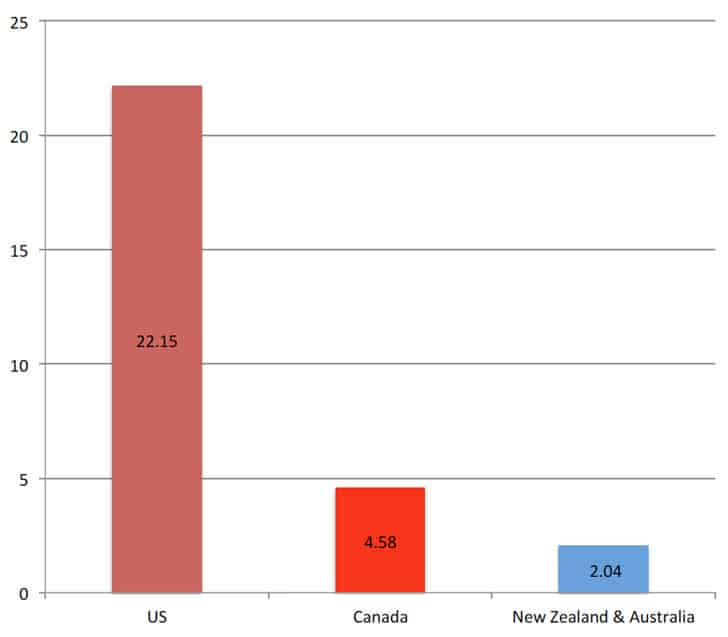
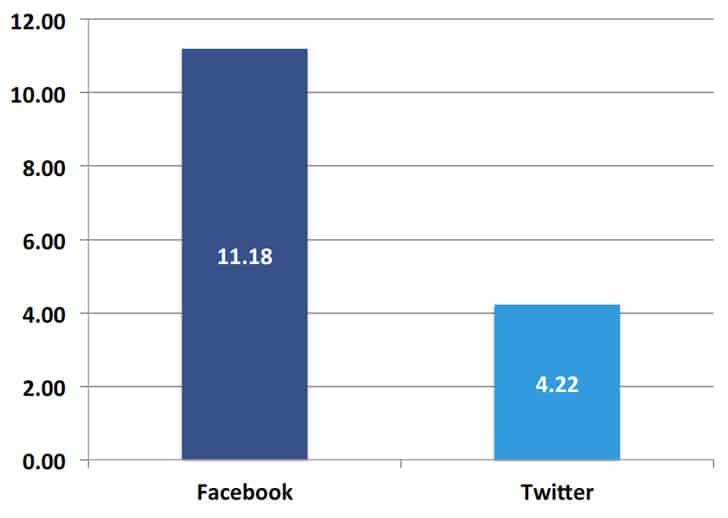
Some institutions sent out amazing responses
The kinds of responses “Ms Bahl” received varied greatly. There were three things we looked for in the response to our social media messages:
- Issuing a timely response;
- Making a personal connection;
- Providing a relevant link to information requested.
There were several institutions that impressed us with the kinds of responses they sent “Ms Bahl.” On Facebook, Massey University (New Zealand) sent a link to their international student site with a compelling image. On Twitter they included a link to the international student site, a smiley face (the smiley face goes a long way!), and within five minutes asked “Ms Bahl” her area of interest and followed her on Twitter.
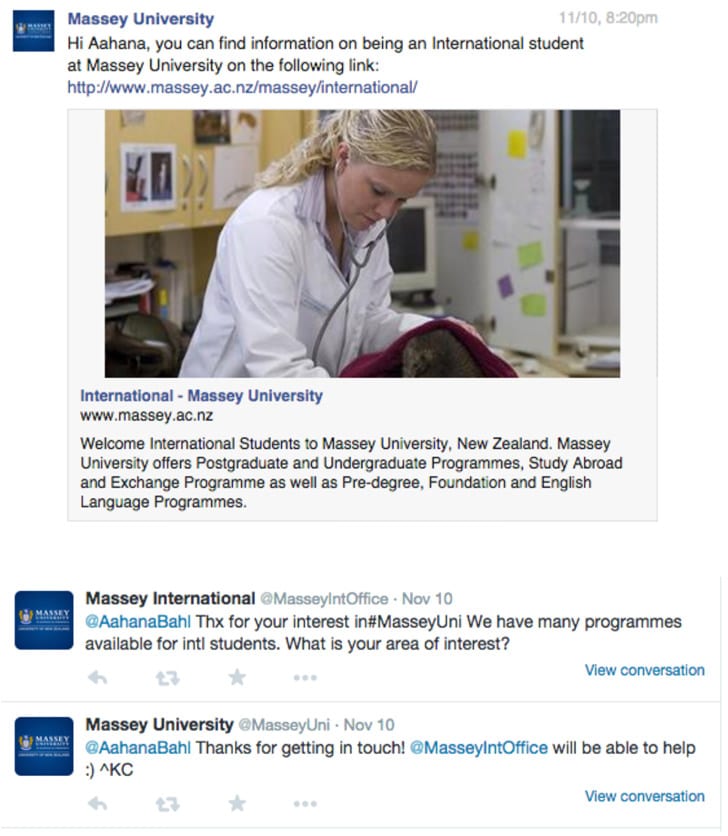
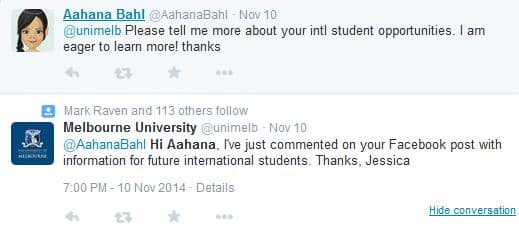
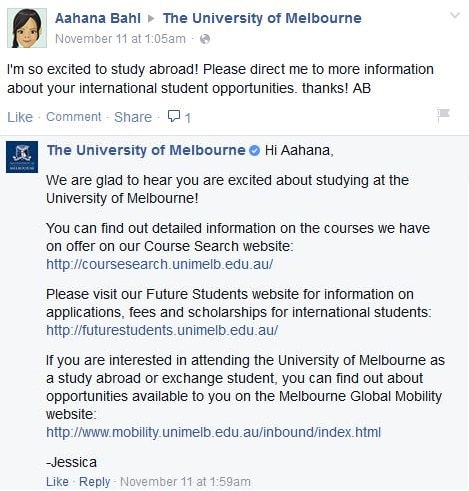
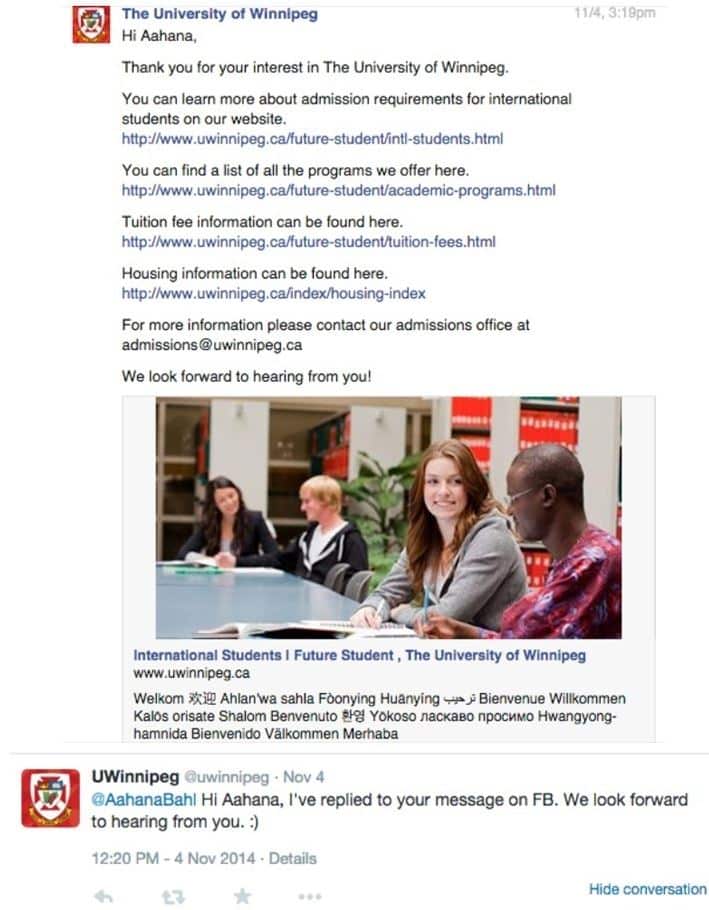
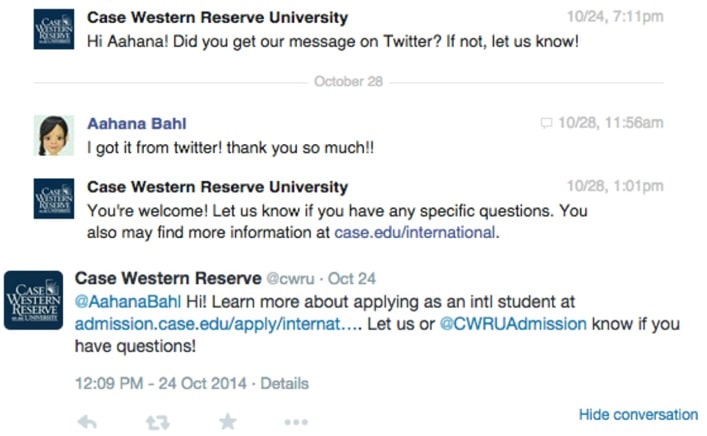

It’s about customer service, and that goes a long way
It’s important to take the time to put in the extra effort to provide the least number of barriers for prospective students to learn about your institution. Now that you’ve read this, are you thinking about your own social media response rates? Do you have a system for replying efficiently and personally to student inquiries made via social media? Maybe you’re even wondering if you were a part of our experiment. Out of courtesy to our colleagues around the world we won’t publicly reveal the institutions surveyed in our experiment, apart from the winners we mentioned above. However, if you’re curious about whether you were included, please contact us. We’ll be happy to let you know. And remember the three key features of a successful social media contact: timely, personal, relevant. Then behind the scenes, monitor everything!















